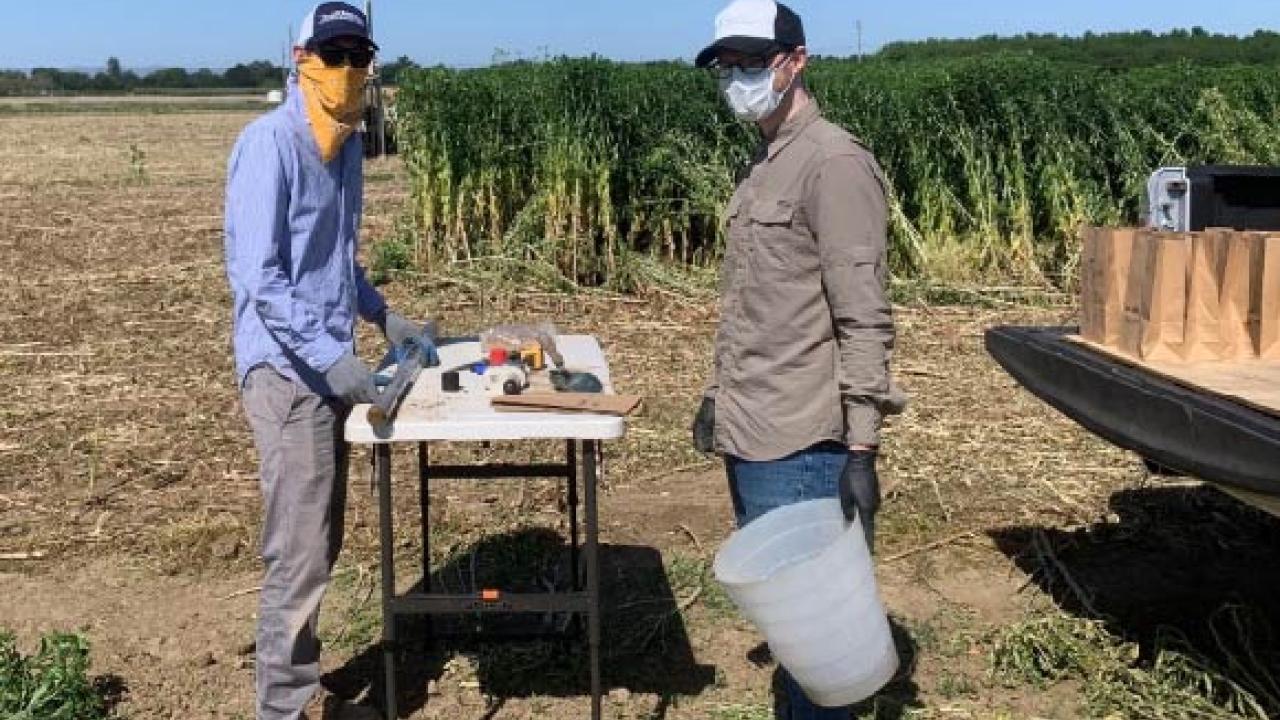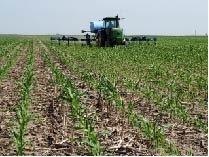
conducting soil sampling in May 2020. Photo by Dr. Steve Kaffka.
Nitrogen balance as a sustainability indicator for agri-food supply chains
UC Davis study provides scientific evidence base for tracking nitrate pollution in rainfed cereal crops
Reducing agricultural nitrogen (N) losses remains a key challenge in achieving more sustainable food systems. A recent global analysis by researchers at UC Davis and the Environmental Defense Fund quantified nitrate (NO3) leaching losses in agricultural fields in response to changes in N balance (N inputs minus N outputs). Led by Dr. Santiago Tamagno and Professor Cameron Pittelkow, this study illustrates how N balance can serve as a simple but important sustainability indicator for grain production. This work supports the long-term goal of helping companies and other actors in the agri-food supply chain track and mitigate NO3 pollution.
The researchers summarized data from 82 field studies of rainfed cereal crops in temperate regions and compared results for the US against other locations. In both groups, results showed that NO3 leaching loss increased exponentially in response to higher N balance, but this relationship was mediated by annual precipitation and soil texture. However, N leaching losses at a given N balance were around 60% higher in the US than in other locations, suggesting opportunities for improvement.

Tracking N losses from agricultural fields is challenging because of the different combinations of management, soil, and weather that are specific to each field. Hydrological lag times also make it difficult to link changes in on-farm management practices with water quality improvements in the short-term. Using N balance as a proxy to estimate N losses provides a tool that integrates changes in N fertilizer management, crop yields, and environmental externalities on a seasonal basis, helping incentivize changes in crop management that are needed to help improve impact on downstream waterbodies.
The feasibility of reducing N leaching losses was analyzed in consideration of both agronomic and profitability aspects. Programs to reduce N losses usually revolve around reducing N rates, but this can come with perceived or real risk of penalizing crop yield. Using a subset from maize fields, the authors demonstrated that N leaching can be reduced between 4 and 13% when N rates are reduced while staying within economically optimum ranges. Furthermore, higher reductions (15%) can be achieved with improvements in N use efficiency, when yields increase at a given N rate.
Global agricultural N pollution is a challenging issue that continues to grow and expand in importance in many areas of society. Complex social, economic, and environmental aspects mean that policy efforts to reduce N losses are approached differently across regions. This work provides a first multi-region approach towards developing better and more accurate prediction models for NO3 leaching losses that, in the long-term, could follow similar estimation protocols also developed for other N loss pathways (e.g., N2O emissions).
Collaborations such as this between UC Davis and Environmental Defense Fund are key to support future improvements in agricultural sustainability. Better N management at the field-level can benefit both farmers and society. An important step is developing science-based indicators for use in agri-food supply chains, further engaging different actors in the effort to reduce the environmental footprint of food production.
Link to the open access article: https://linkinghub.elsevier.com/retrieve/pii/S0167880921004187
Environmental Defense Fund work on N balance: https://www.edf.org/ecosystems/making-invisible-loss-nitrogen-visible
Pittelkow lab at UC Davis: https://pittelkow.ucdavis.edu/
